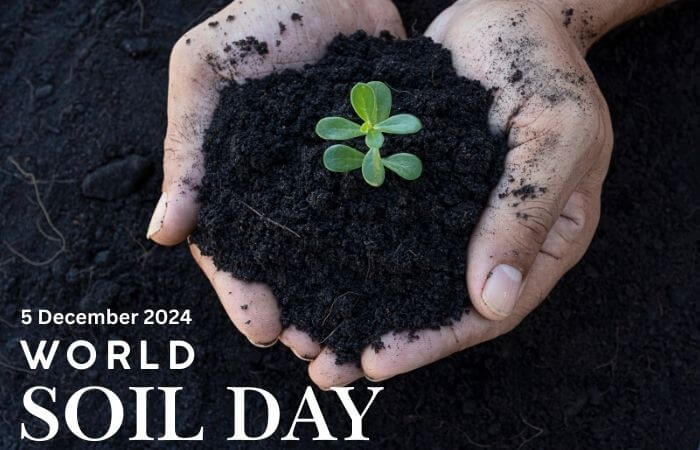In this article, we’ll discuss soil composition, formation of soil, and different types of soil, such as sandy, clay, silt, peat, chalk, and loamy soil.
The layer of earth that is composed of soil and involved in the process of soil formation is called Pedosphere. Soil is an important natural resource that consists of minerals, organic matter, air, and water.
1. Minerals:
Minerals are present in soil due to the weathering of rocks, which adds silica, calcium, mica,
iron and many elements to make soil. These minerals give plants nutrients, and they make up 45% of the soil’s composition.
Minerals are of two main types: primary minerals, which are found in sand and silt as they are similar to the parent material from which they are formed. Secondary minerals are formed from the weathering of rocks, releasing ions and mineral forms like silicate clay.
2. Organic matter:
Organic matter present in soil is made up of dead plants, animals, and microbes. This organic matter contributes to the soil’s fertility. Only 2-10% of organic matter is present in the soil.
3. Air and water:
Air and water make up 50% of the soil composition, which means the soil has empty space. called pores, which both air and water can fill.
4. Earthworms:
Earthworms, also called farmers’ friends, help in aerating the soil, decomposing organic matter, and making soil rich nutrients. The different combinations of sand, silt, and clay that are present in the soil determine its texture. For example, if soil has 20% clay, 40% sand, and 40% silt, then the soil is loamy.
The different ways that rocks weather (fragment) result in the formation of natural soil are as follows:
- Physical weathering is the breakdown or fragmentation of rocks due to change in temperature or water forces. It takes place near the surface of Earth.
- Chemical weathering is the breakdown of rocks due to chemical reactions between minerals of rocks with air, water, or any other chemical. This process can alter the chemical composition of the soil.
- Biological weathering, such as burrowing, is the fragmentation of rocks by living organisms. Animals bring water and air into the rock, or plant roots that grow into cracks in rocks can split them.
There are five factors that affect the formation of soil: parent material, biotic organisms, climate, topography, and time.
1. Sandy soil:
has a large proportion of sand and less amount of clay; therefore, it is highly porous and has a high water percolation rate. Light in weight, dry, and low in nutrients. The sandy soil is formed from the weathering of granite, limestone, and quartz. Due to the large pore size This soil is not ideal for growing vegetation, but we can still grow potatoes, China rose, etc.
2. Clay soil:
It is the soil that has a large quantity of nutrients present in it, making clay soil dense and heaviest of all. It has excellent water-holding capacity due to the little air space. Clay soil has a large proportion of clay, which is around 25%. These types of soil are dry in summer and cold and wet in winter. We can grow broccoli, cauliflower, and many more in this type of soil.
3. Silt soil:
This soil has medium-sized particles, allowing it to have well drainage and
moisture holding capacity. This soil has high fertility and is light in weight. This type of soil is mainly found near river lakes and other water bodies. Rains and currents can wash silt soil away. We can grow tomatoes and daffodils in this type of soil.
4. Peat soil:
It has a large amount of organic matter, which is rich in dead plants, giving it a black and dark brown color. Because of its high humus content, it has a high water retention capacity. It is useful for growing saplings and provides a perfect base for planting. This type of soil is used for growing onions, carrots, lettuce, and rice.
5. Chalk soil:
Chalk soil is made up of limestone and is alkaline in nature, due to large amounts of calcium carbonate. If the percentage of clay is high in this soil, then this soil becomes capable of holding organic matter and nutrients. This type of soil supports the growth of asparagus, cucumbers, and lavender.
6. Loamy soil:
It is a mixture of sand, silt, and clay and therefore has the benefits of all three soils. It holds a sufficient amount of moisture and nutrients and has a sufficient drainage system, making it the best choice for crop cultivation. It is also called agriculture soil due to the right amount of air passage and water that can easily seep to the roots, helping the plants to flourish. Dark in color, as rich in organic matter. This type of soil is used for growing all types of fruits, vegetables, cereals, oilseeds, and pulses. If you want to explore more about soil formation and related topics, visit here.

